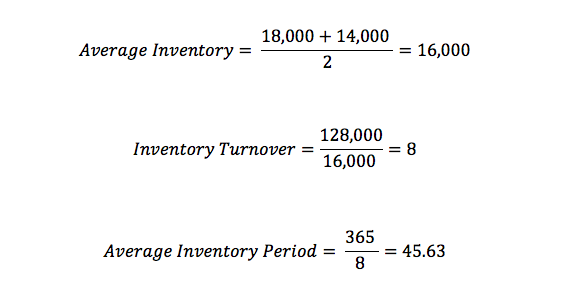 What is Average Inventory Period?
What is Average Inventory Period?
Definition: Average inventory period, also referred to as day inventory outstanding, measures the average number of days that a business or company holds inventory before it is sold. In essence, the average inventory period is the amount of time the goods sit on the shelf before the company can sell all the stock.
Businesses apply the average inventory period adjusts for monitoring purchase patterns as well as consumer trends of their stock so they can be able to minimize storage and carrying costs. Similarly, it can help the company management to determine the fast-moving products. The measure shows how efficient the company is in converting its stock inventory into trades.
The ideal average inventory period ratio should be lower which implies that the business is turning the stock into sales faster which means they can bring more new stock faster. But this measure is important if it can be compared with the results of previous periods as well as with similar sector companies.
Calculating the Average Inventory Period Formula
The average inventory period formula is computed by dividing the number of days in the period which can be quarterly or yearly by inventory turnover.

You have to determine the inventory turnover of the company over that period that can be one year or quarterly but most companies prefer monitoring frequently. It involves dividing the costs of goods sold by the business’ average inventory.

To calculate average inventory take the sum of the opening inventory and the closing inventory for that period and then divide by 2.

Average Inventory Period Example
Company ABC has a beginning inventory of $18,000 and a closing inventory of $14,000. In fiscal 2019 the company made sales of $200,000 and the cost of goods sold was $128,000. With this information, you can calculate the average inventory period like this:

How to Use Average Inventory Period – Analysis and Interpretation
For company ABC it needs 45.63 days to clear its inventory. Businesses can compare previous figures with the current figure to ascertain efficiency levels in clearing stock. If the figure increases then it means efficiency levels have gone down and if it decreases it means the company is now more efficient.
The concept of the average inventory period is very important in the management of the business as it gives insights on sales trends of different goods. This will help the management in knowing the goods that are moving fast and thus inform the volumes of stocks of the products to be bought to minimize related costs such as storage and carrying while at the same time enhancing cash flow.
If the inventory is moving faster, then it means that cash flow is better which is good for creditors and investors. Also if the previous year’s inventory was moving fast but has slowed this year that is a concern and it is a sign that the company is struggling.
However, the average inventory period ratio might not indicate whey the company is struggling to move inventory of particular products. Therefore in this kind of situation, it is important for the company management to separate the products and calculate an inventory of each to ascertain the product that is not moving thus dragging sales. This can then inform the decisions that the company should take going forward to ensure that product moves fast.
Summary
The average inventory period rate can often change in the business cycle because of seasonality in different industries therefore management should be aware of this. For instance, for retail businesses, it will be shorter during holiday seasons and thus it is important as it helps one learn shopping trends of customers. Most importantly average inventory period should only be compared for businesses in the same industry dealing with similar or related products.
